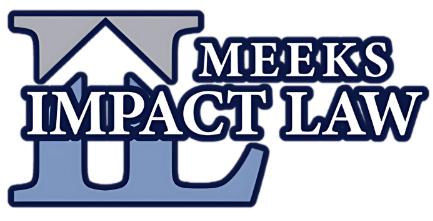Liability in Accidents Involving Autonomous Vehicles
While self-driving cars promise increased safety by reducing human error, they aren’t perfect. Accidents still happen, and determining fault can be complicated when they do. Liability in autonomous vehicle crashes involves multiple factors. Determining liability is critical for anyone impacted by such an accident.
Accidents involving autonomous vehicles (AVs) can occur in various ways: as a rider in an autonomous rideshare vehicle, as a driver of an AV with varying degrees of responsibility depending on the vehicle’s level of automation, or as a victim of a third-party AV negligently responsible in an accident. Understanding these nuances is essential for addressing liability.
Once liability is established, additional steps are necessary to ensure you maximize your recovery. Learn more about accidents involving autonomous vehicles below or jump into a free case evaluation to get your questions answered and peace of mind back.
What is an Autonomous Vehicle?
An autonomous vehicle (AV), often called a self-driving car, is equipped with technologies that allow it to operate with little or no human input. These vehicles rely on sensors, cameras, radar, lidar, and artificial intelligence systems to navigate roads, detect obstacles, and make driving decisions.
For a deeper dive into how this technology works, check out this helpful page by the National Highway Traffic Safety Administration on autonomous vehicle technology.
Understand the Levels of Automation
The first step in determining liability is understanding the type of automation the vehicle uses. The Society of Automotive Engineers (SAE Levels of Automation) has established a widely accepted scale from Level 0 to Level 5:
- Level 0: Fully human-controlled vehicles with no automation.
- Levels 1-2: Partially automated systems, like adaptive cruise control, where drivers remain actively engaged.
- Levels 3-5: Higher degrees of automation, with vehicles taking on increasing responsibility. At Level 5, vehicles are fully autonomous.
Liability often hinges on how much control the human driver had—or should have had—at the time of the crash. For example, if the car is a Level 2 vehicle, the driver is typically required to monitor the road and intervene. If drivers fail to take control when prompted or are distracted during critical moments, they might bear some or all responsibility. On the other hand, for Level 4 or 5 vehicles, responsibility may shift toward the manufacturer or software developer.
In every case, additional nuances will be explored and considered by the insurance companies and other parties involved. That’s where having a dedicated team fighting for you can make all the difference.
Investigate the Vehicle’s Technology and Data Logs
When higher-level AVs (Levels 3-5) are involved in accidents, professionals evaluate the vehicle’s technology and extensive data logs to determine fault. This process may include examining:
- Sensor or camera malfunctions: Issues with the vehicle’s radar, lidar, or cameras.
- Software errors: System misinterpretations of data or failure to respond appropriately to road conditions.
- Maintenance and updates: Neglected software updates or unaddressed recalls that could shift liability to the vehicle’s owner.
- Data logs: Key insights, such as the vehicle’s speed and movements, sensor readings, warnings issued, or manual overrides, can clarify what occurred.
Collaboration between legal professionals, engineers, and accident reconstruction experts is crucial to untangle these technical issues and build a strong case.
Consider Manufacturer Responsibility
Under product liability law, manufacturers may be liable if defects in the vehicle’s design, manufacturing, or warnings contributed to the accident. For example:
- Design defects: An unsafe self-driving system that lacks proper safeguards.
- Manufacturing defects: Faulty sensors, wiring, or hardware installed during assembly.
- Inadequate warnings: A failure to provide clear instructions about the car’s limitations and proper use.
In some cases, responsibility may also extend to software developers or third-party suppliers involved in the vehicle’s production. Each scenario requires a detailed investigation to determine fault.
Autonomous Vehicle Crash? Let Meeks Impact Law Navigate the Complexities for You!
As technology evolves, so do the complexities of determining fault in car accidents. Accidents involving autonomous vehicles can be particularly overwhelming, with questions about driver negligence, manufacturer responsibility, and software errors all coming into play.
At Meeks Impact Law, we understand the intricacies of product liability, negligence laws, and cutting-edge automotive technology. Our experienced team will thoroughly investigate your case, consult with industry experts, and fight to maximize your recovery.
Don’t navigate these challenges alone. Let us handle the legal complexities while you focus on healing. Contact us today—678-341-5212
—for a free case consultation and take the first step toward securing the compensation you deserve.
